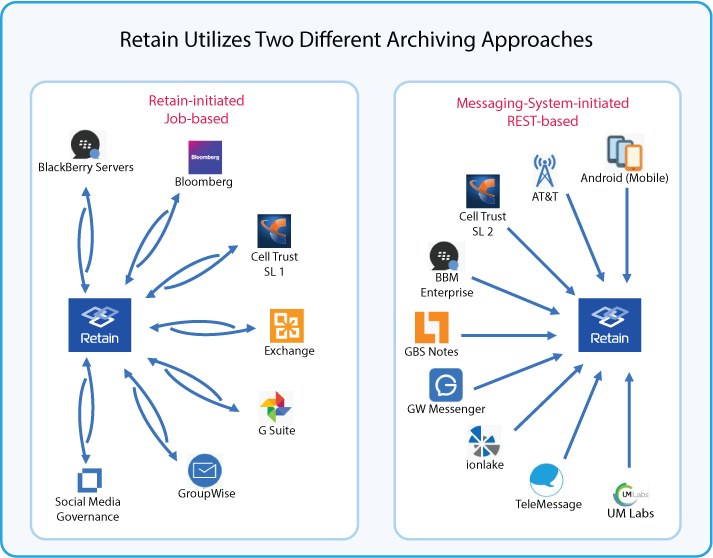5.0 Getting Started with Retain Archiving
First, Plan Your Retain Archiving System
As a best practice, we recommend that you start by creating a written plan. Obviously, this plan will evolve and expand over time, but beginning with a plan is the most effective and efficient way to ensure a successful Retain deployment.
Do the following:
-
Identify stakeholders in your organization who have a vested interest in a successful Retain deployment.
-
With the stakeholders, decide on a convenient and accessible way to propose, review, and finalize your Retain deployment plan.
-
Create your plan by doing at least the following:
-
Identify the messaging systems that Retain will service.
-
Record each system’s DNS and IP address information, physical location, administrator information, and any other information relative to the system’s future interaction with Retain.
-
Save a space to record details identified during the deployment, such as system credentials, licenses, and other information that Retain and third-party systems will require as you connect them together.
-
Determine the times when systems and network traffic are slow and best suited for archiving operations to take place. This will feed into schedule creation as proposed in Creating Your Schedules.
-
Articulate the scope of what needs to be archived for each system: users, groups, message types, date ranges, attachments, and so on.
-
Avoid redundant data collection.
-
Next, Match Your Messaging Systems to Retain’s Archiving methods
Retain’s archiving methods are designed to match the messaging systems being archived.
Find your messaging platforms in Figure 5-1 to determine which of Retain’s archiving models your organization requires.
Figure 5-1 Retain’s Archiving Models Match Platform Needs

|
Retain-initiated Job-based |
Messaging-system-initiated REST-based |
|---|---|
|
|
Where to Go from Here
-
Job-based: For your messaging platforms that require Retain-initiated archiving, continue with
Understanding Retain Jobs.
-
REST-based: For your messaging platforms that require a REST-based solution, skip to Section 7.0, Setting Up REST-Based Archiving.